Since Olympus announced it was selling its camera division, some owners are questioning whether to stay with the brand. We asked leading Olympus users why they chose the brand and whether they have any plans to change. Here’s what they said…
John Ashton
Uses: Olympus OM-D E‑M1X, Olympus OM-D E-M1 Mark II
Favourite item: Olympus 300mm f/4

England XV v Barbarians, 2019. Olympus E-M1X, 40-150mm f/2.8, 1/2000sec at f/2.8
As a rugby photographer I can shoot distant players across the pitch without carrying long, heavy lenses. The weatherproofing is also important. I’ve worked in downpours and the equipment has never let me down. Olympus’s support through Covid has been wonderful: webinars, tutorials and mailings have kept me informed. I really feel part of a community. I see no reason to switch systems. The company has set out some really exciting plans. I can’t wait for the 150-400mm f/4.5 lens which should make a significant difference in my photography.
Ivor Rackham
Uses: Olympus OM-D E-M1 Mark II
Favourite item: The MMF-3 adapter
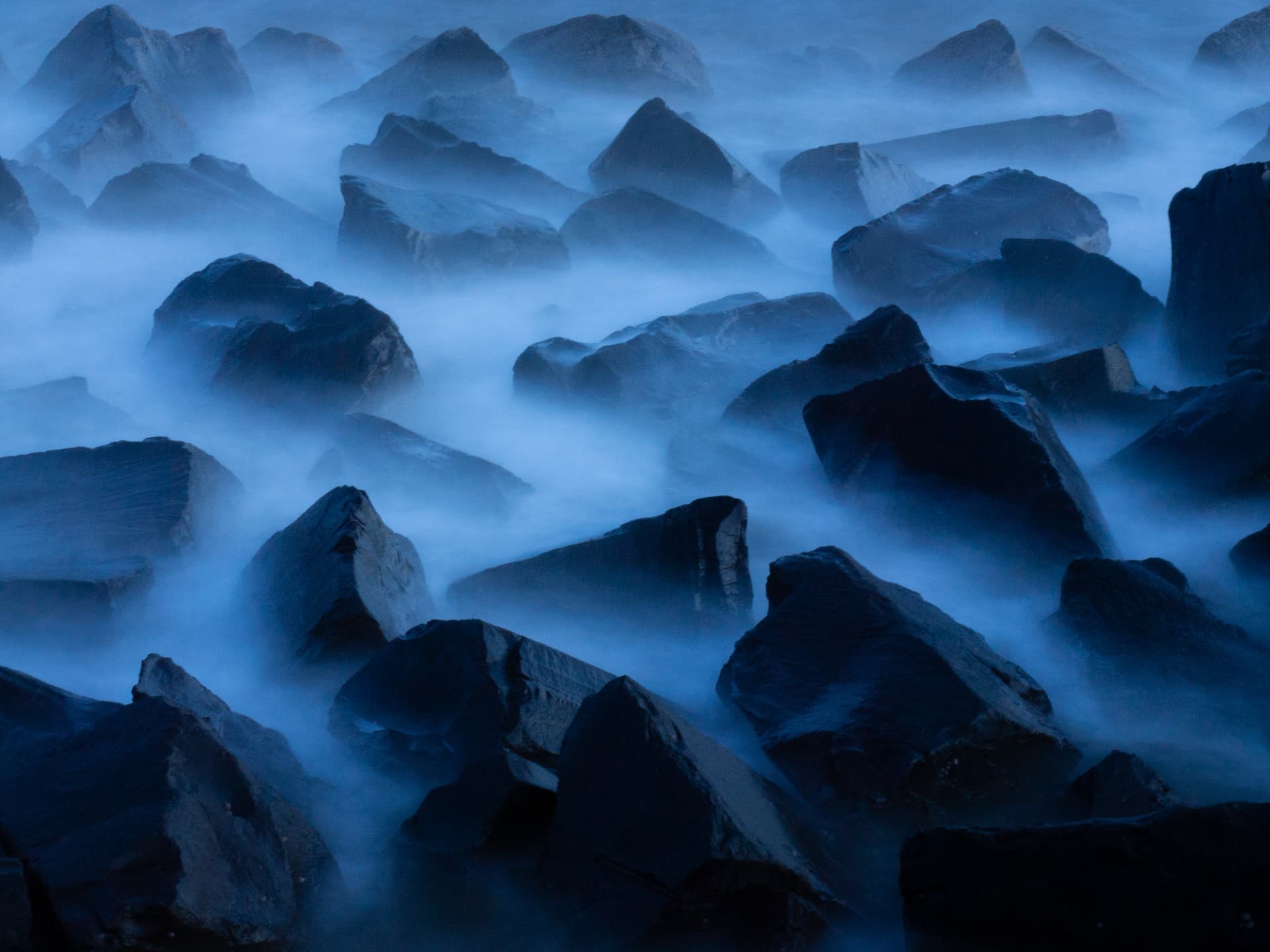
Amble Harbour Olympus E-M5, 14-42mm, 40 seconds at f/22
Olympus offers an unbeatable combination of ergonomics, amazing in-body image stabilisation and pin-sharp image quality. I handle hundreds of cameras and, counter-intuitively, not one of them fits my big hands as well as Olympus OM-Ds. Robust, small and discreet – exactly what I need when running workshops in the wilds or photographing weddings. When most camera manufacturers are struggling, JIP believes Olympus is worth investing in. That’s good news! After all, Olympus’ market share is growing, and Micro Four Thirds is the most popular lens mount.
Andy Rouse
Uses: Olympus E-M1X, 40-150mm, 300mm f/4, 60mm macro
Favourite item: The 100-400mm IS is my go-to lens right now

Andy Rouse photographed these tiger cubs at Ranthambore, India, using an 840mm equivalent focal length – handheld, thanks to Olympus’s Image Stabilisation. Olympus E-M1X, 300mm f/4 + MC-14 adapter, 1/640sec, f/8
Olympus has excellent tech in an ultra-lightweight package. It’s ideal for stalking, carrying, lurking… It has reliable AF, the focus stacking is awesome and so is Pro Capture. I think the future is bright for Olympus. They have a great lens roadmap, giving me lenses that are simply fantastic for professional wildlife photography: the flexibility and portability of the kit has allowed me to nail images that I could not before. It would be a major step back in my professional career as one of the world’s best wildlife photographers to needlessly abandon a system I rely on. And which I cannot do without!
David Tipling
Uses: Olympus OM-D E-M1X & E-M1 Mark lll, 300mm f/4 Pro, 40-150mm f/2.8 Pro, 12-40mm f/2.8 Pro, 8mm Fisheye, FL-900R Flash
Favourite item: 40-150mm f/2.8 Pro
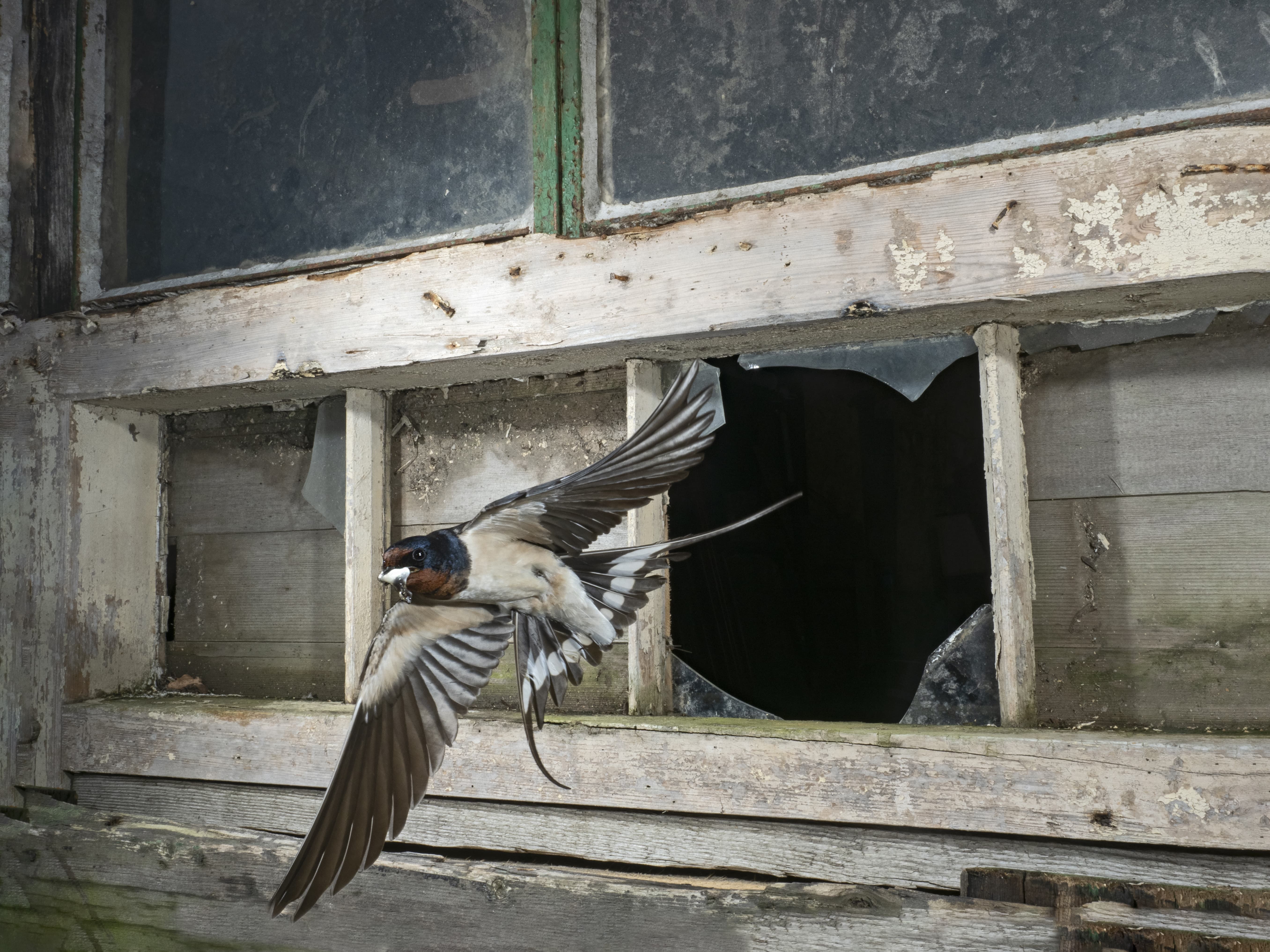
A barn swallow flying out from her nest. Olympus E-M1 Mark III, 12-40mm f/2.8, 1/125sec at f/18
I switched from being a loyal Nikon user of 30 years to Olympus nearly three years ago, primarily for the compact size, light weight and silent shutter. I realised mirrorless cameras were likely to be the future and it seemed like a good time to change as both Nikon and Canon were behind the curve. The main consideration for me is file quality, and Olympus cameras deliver what I need – but they also give me superb build quality, complete weather sealing (you can hold the kit under a running tap) and Pro Capture enables pictures to be taken that were impossible before. The image stabilisation is amazing so unless I am sitting in a hide for prolonged periods I never now use a tripod. In short, when travelling or when out walking here on the marshes in north Norfolk I can walk all day with my Olympus gear and at the end not have a bad back! I am really looking forward to the arrival of the 150-400mm f/4.5 – a very exciting lens for wildlife photographers.
Andrew Fusek Peters
Uses: Olympus E-M1 Mark III, E-M1X, 40-150mm, 300mm F4, 12-100mm, 60mm Macro, 7-14mm
Favourite item: 12-100mm Pro
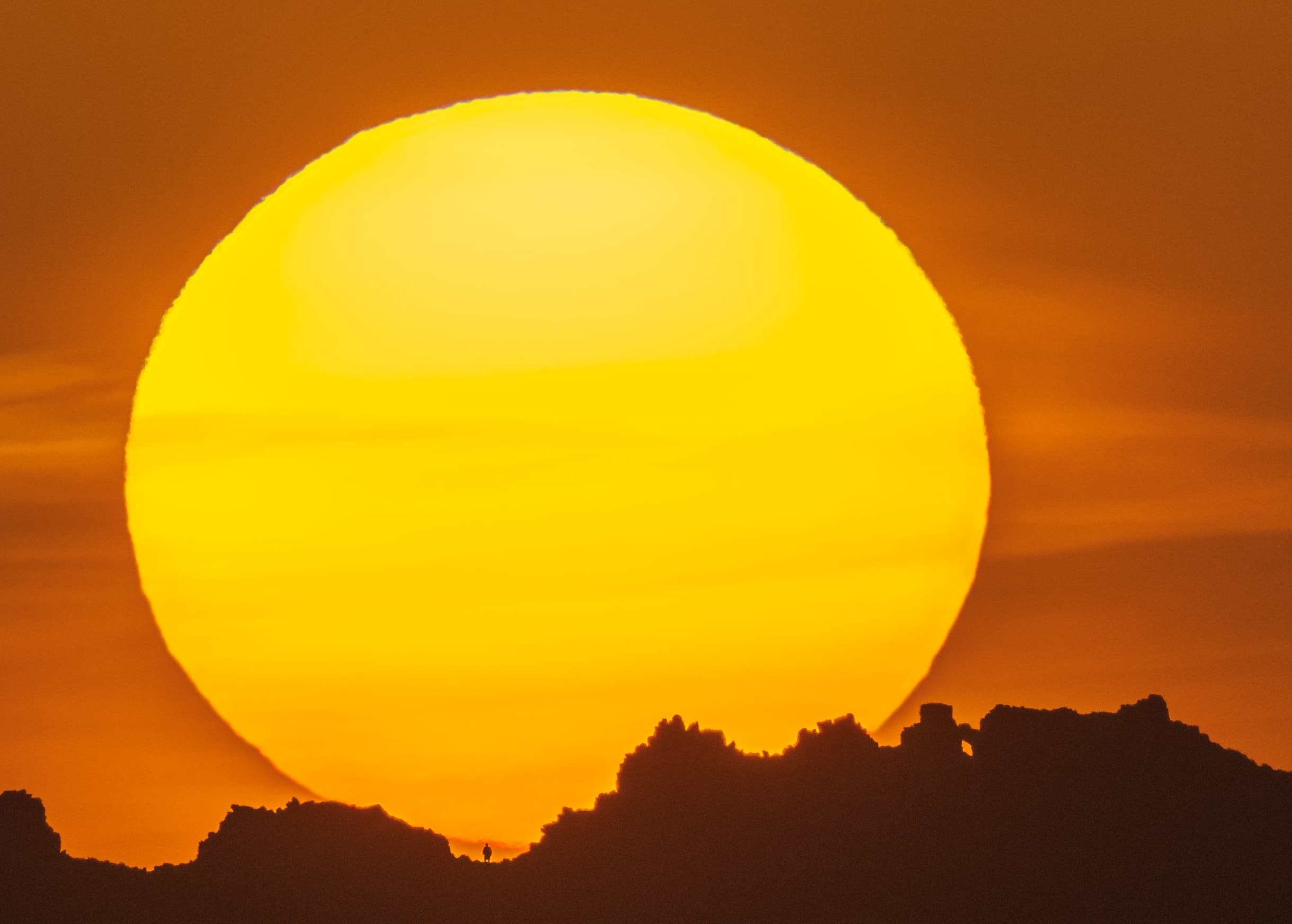
Olympus E-M1 Mk III, 300mm F/4 + MC-20, 1/1000sec at f/11
Since moving from full-frame in 2017 I’ve never looked back. I struggled with the weight of full frame and big lenses. I can now carry lenses from 14mm to 1200mm equivalent in one slim rucksack. Because I have tremors, IBIS is a life saver, especially in low light, and the extra depth of field, coupled with the incredible Pro Capture, has enabled me to consistently capture birds and butterflies in flight. To those who doubt that Olympus can compete at a pro level, I have placed in national and international competitions and my pictures are used by national newspapers and magazines. During lockdown I photographed a huge sun setting over the Devil’s Chair rock formation on the Stiperstones nature reserve (below), using the 300mm f/4 and double extender (giving me 1200mm of reach) and shooting handheld. The photo made the front page of The Times.
Ian Berry
Uses: Olympus OM-D E-M1 Mark II (2 bodies) E-M5 Mark II, Pen F
Favourite item: 17mm f/1.8, 12mm f/2, 25mm f/1.8

Spotted at a restaurant in Corozal, Columbia. Olympus E-M1 Mark II, Lumix Vario G 12-35mm f/2.8, 1/200sec at f/2.8
I like the small, reliable and sturdy bodies and especially the small, light lenses – and the image stabilisation. After about five years of using Olympus with 100% trouble-free, heavy shooting in all climates, I’ve ordered a third E-M1 Mark II as a spare, on hearing the news of the ownership change. After a lifetime of shooting with different brands, the ability to travel with a relatively light bag, to produce a double spread in a magazine, make a 30in exhibition print and have, in Micro Four Thirds, the widest choice of top-quality glass, of any brand, why on Earth would I change?
Mark Humpage
Uses: Olympus OM-D E-M1 Mark III
Favourite kit: 7-14mm and 300mm f/4 Pro
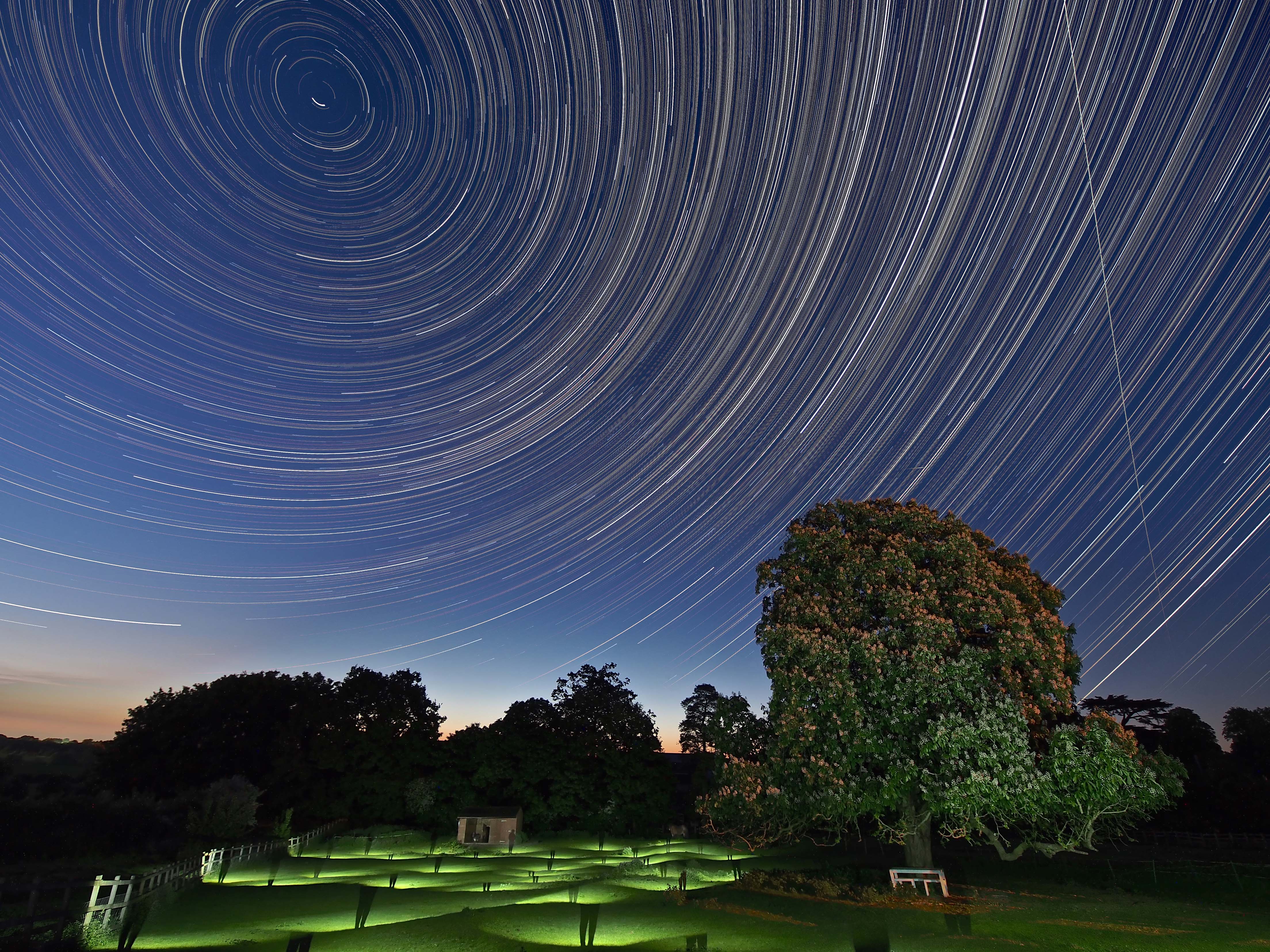
Five hours of Earth spinning, including the ISS. Olympus E-M5, 7-14mm, 1200x 15sec exposures, f/4
Portable and bomb-proof gear – comes in handy with my work! I’ve been shooting with Olympus kit since the company’s very first true 4MP digital camera, the E-10. Those were the days! I shoot in extreme environments and no other camera system can withstand, dust, ice or water like Olympus gear.
Tesni Ward
Uses: Olympus E-M1X, 300mm & 40-150mm
Favourite kit: Olympus 300mm f/4

Olympus E-M1X, 300mm f/4, 1/2500sec at f/4
I love how durable and customisable the Olympus system is to the individual photographer’s needs. It offers everything that I need, from both a photographic and video perspective. It has an exciting lens roadmap ahead as well – I can’t wait to get my hands on the upcoming 150-400mm lens and I’m excited by its potential applications in wildlife photography.
Nick Danziger
@nickdanziger
Uses: Digital: OM-D E-M1 Mark II, Film: OM-3Ti & OM-4Ti (with Tri-X)
Favourite item: ED 17mm f/1.2 PRO; ED 12mm f/2

The Queen with Tony Blair. This was the first time she had been photographed at the regular meeting with her Prime Minister Olympus E-400, 14-54mm f/2.8-3.5, 1/60sec at f/2.8
Olympus cameras are beautifully small, quiet, light and discreet. I have spent more than three and a half decades shooting with my trusted Olympus cameras, film and digital. They have allowed me to document my passion for people, adventure, storytelling and advocacy. I have shot war zones and supermodels with them (always on prime wideangle lenses). They have travelled with me through the corridors of power, from Camp David to No.10 Downing Street and Buckingham Palace. They have accompanied me to more than 100 countries including North Korea, Mongolia, Sierra Leone, Myanmar, Colombia, Afghanistan and to remote areas of the Arctic and the Amazon, capturing intimate moments on film or on SD cards – and I have been fortunate to have had the support of Olympus technicians whenever I have encountered problems. I consider my many awards as recognition of the teamwork – which includes Olympus – to bring those images to the public.
Nick Mason
Uses: Olympus OM-D E-M1 Mark ll and E-M5 Mark lll
Favourite item: 12-40mm f/2.8
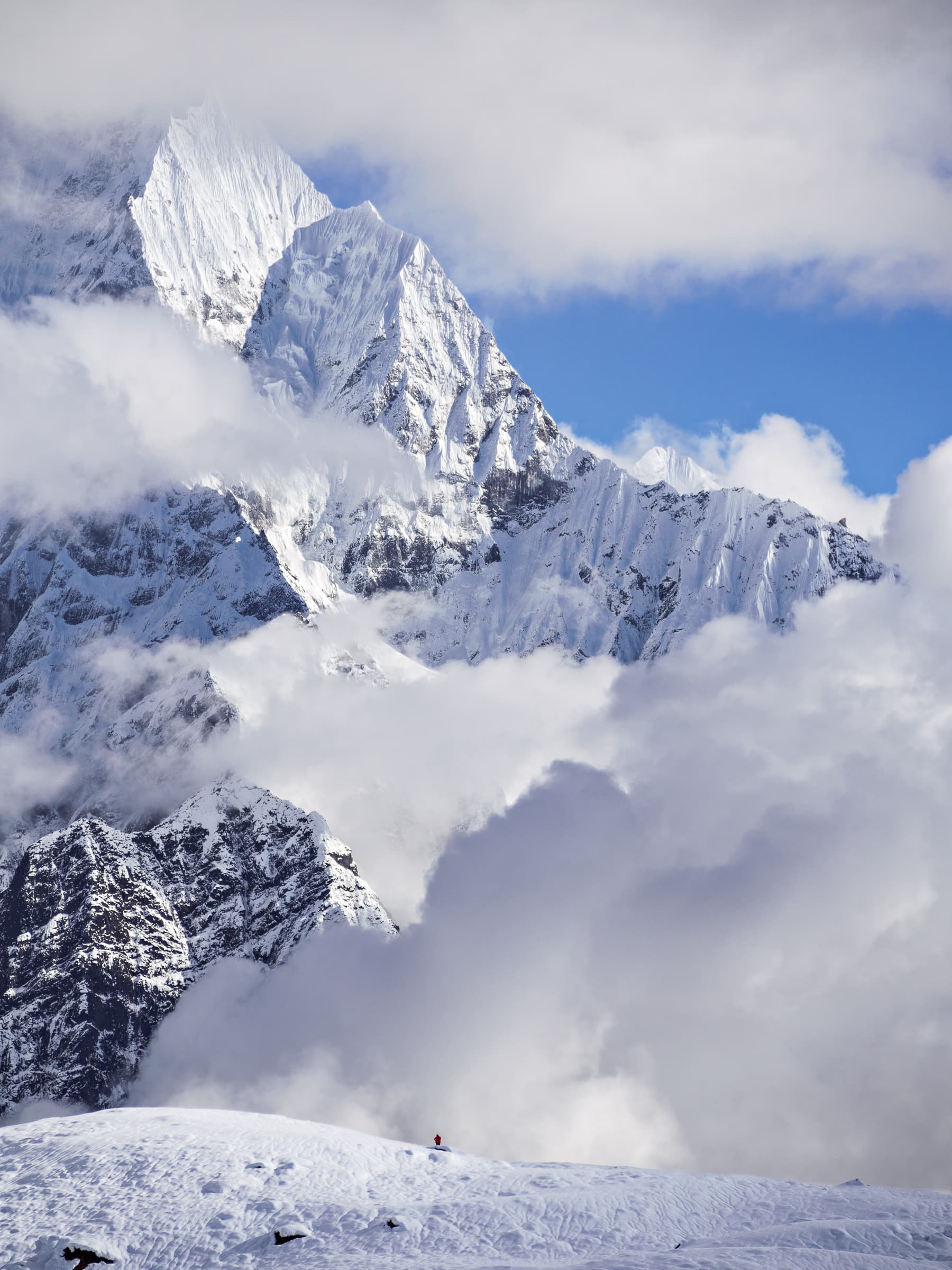
Afternoon clouds form around the 6,623m Thamserku peak, Nepalese Himalaya. Olympus E-M5, 40-150mm, 1/1600sec at /f5.6
The majority of my photography takes place in mountains and wild places where the portability, excellent ergonomics and peerless weatherproofing of Olympus cameras, combined with a remarkable range of high quality, weather-sealed lenses have never let me down. With the 20MP available from the current generation of Olympus cameras, never mind the 80MP available in Hi-Res mode, I can produce sharp, detailed A2 prints with ease that are indistinguishable from those I have made with full-frame systems that are kilograms heavier. The theoretical disadvantages of the smaller MFT sensor, the subject of so much heated debate in photography forums, are simply not an issue for me in the real world. Olympus states that JIP will continue to develop and make new cameras, so let’s see what the future holds.
Craig Reilly
Uses: Olympus OM-D E-M1 Mark I & III, 17mm & 45mm f/1.8, 12-40mm Pro f/2.8
Favourite kit: 17mm f/1.8 lens

Olympus E-M1, 12-40mm f/2.8, 1/200sec at f/5.6
I love how I can customise the buttons. Instead of using a camera how a brand wants me to use it, I can set my Olympus up the exact way it suits me – changing certain buttons for certain uses, and turning some off if required, is the way it should be, as every photographer will have their own unique way of taking photos. It hasn’t even crossed my mind to switch systems. Once you really know your camera, you really can (and do) get attached to it. Even though I love my Mark III, the Mark I is still my ‘best friend’.
Further reading
Opinion: what went wrong with Olympus
Olympus has NOT fallen: exclusive Olympus UK interview
Olympus OM-10 E-M1 Mark III in-depth review







